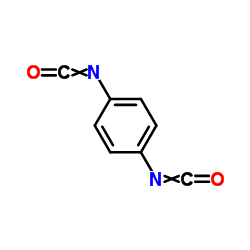Enzyme immobilization on silane-modified surface through short linkers: fate of interfacial phases and impact on catalytic activity.
Nesrine Aissaoui, Latifa Bergaoui, Souhir Boujday, Jean-François Lambert, Christophe Méthivier, Jessem Landoulsi
Index: Langmuir 30(14) , 4066-77, (2014)
Full Text: HTML
Abstract
We investigated the mechanism of enzyme immobilization on silanized surfaces through coupling agents (cross-linkers) in order to understand the role of these molecules on interfacial processes and their effect on catalytic activity. To this end, we used a model multimeric enzyme (G6PDH) and several cross-linking molecules with different chemical properties, including the nature of the end-group (-NCO, -NCS, -CHO), the connecting chain (aliphatic vs aromatic), and geometrical constraints (meta vs para-disubstituted aromatics). There did not seem to be radical differences in the mechanism of enzyme adsorption according to the linker used as judged from QCM-D, except that in the case of DIC (1,4-phenylene diisocyanate) the adsorption occurred more rapidly. In contrast, the nature of the cross-linker exerted a strong influence on the amount of enzyme immobilized as estimated from XPS, and more unexpectedly on the stability of the underlying silane layer. DIC, PDC (1,4-phenylene diisothiocyanate), or GA (glutaraldehyde) allowed successful enzyme immobilization. When the geometry of the linker was changed from 1,4-phenylene diisothiocyanate to 1,3-phenylene diisothiocyanate (MDC), the silane layer was subjected to degradation, upon enzyme adsorption, and the amount of immobilized molecules was significantly lowered. TE (terephtalaldehyde) and direct enzyme deposition without cross-linker were similar to MDC. The organization of immobilized enzymes also depended on the immobilization procedure, as different degrees of aggregation were observed by AFM. A correlation between the size of the aggregates and the catalytic properties of the enzyme was established, suggesting that aggregation may enhance the thermostability of the multimeric enzyme, probably through a compaction of the 3D structure.
Related Compounds
| Structure | Name/CAS No. | Molecular Formula | Articles |
|---|---|---|---|
 |
1,4-Diisocyanatobenzene
CAS:104-49-4 |
C8H4N2O2 |
|
Preparation of Pickering emulsions through interfacial adsor...
2015-01-01 [Beilstein J. Org. Chem. 11 , 2355-64, (2016)] |
|
Molecular layer deposition of functional thin films for adva...
2011-02-01 [ACS Appl. Mater. Interfaces 3(2) , 505-11, (2011)] |
|
A quinoline based bis-urea receptor for anions: a selective ...
2012-03-01 [Nat. Prod. Commun. 7(3) , 301-4, (2012)] |